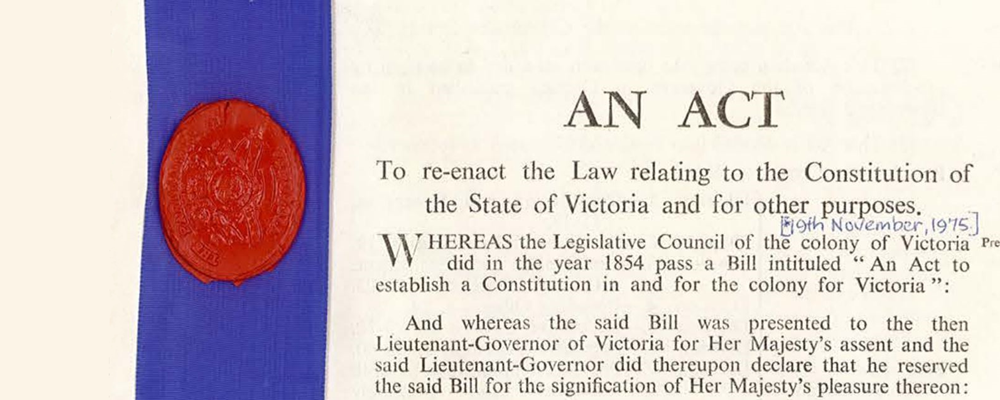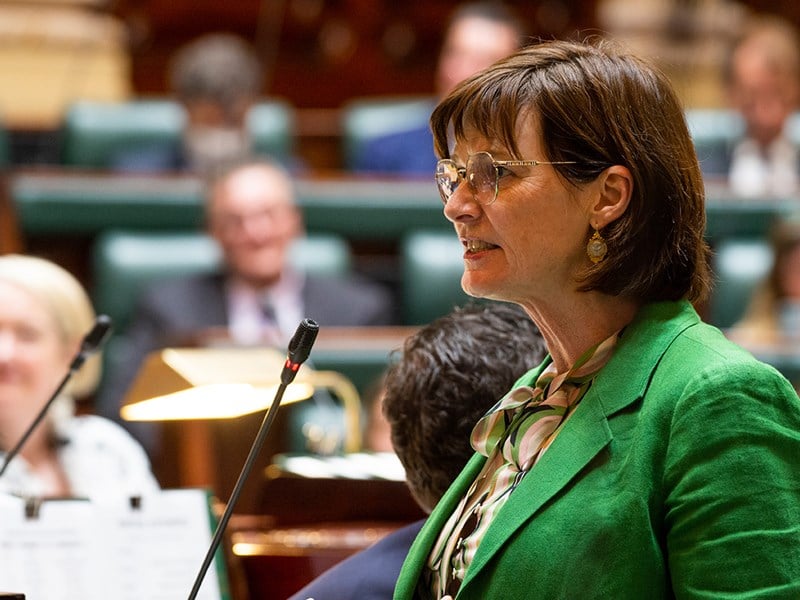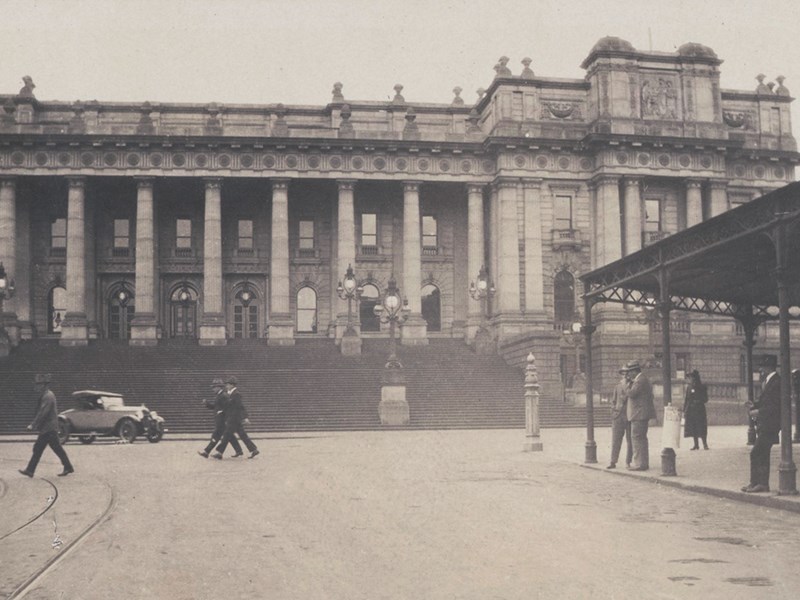The Constitution
The Parliament of Victoria is given its powers by a document called the Constitution.

On this page
What is the Constitution?
The Victorian Constitution (officially the Constitution Act 1975) provides the framework for democracy and responsible government in Victoria.
It sets out the basic rules relating to the Crown (the Queen or King and the Governor), the Legislative Council, the Legislative Assembly, local government, the Supreme Court and the executive (ministers and the public service).
Powers given by the Constitution
The Constitution gives the Parliament the power to make laws. It also specifies:
- the number of members in the Legislative Council and the Legislative Assembly
- when general elections must be held
- who can be a member of Parliament
- who can vote in elections.
Changing the Constitution
To change the Constitution, Parliament must pass amendments to the Constitution Act 1975.
Some parts of the Constitution can only be changed if certain requirements are met.
History of the Constitution
In 1854 the Legislative Council agreed to the Victorian Constitution. However, as Victoria was a British colony, the Constitution needed to be passed as an Act of the United Kingdom Parliament.
The Constitution did not become an Act of the Parliament of Victoria until 22 October 1975. This is why its official title is the Constitution Act 1975.
To discover more, click the expandable links below.
Before Federation (1851-1900)Victoria formally separated from New South Wales on 1 July 1851. In November of that year, the first session of the Legislative Council of the new colony was officially opened.
In 1854 the Council established a sub-committee to draft a new constitution for the colony. The constitution bill was passed by the Council and then sent to Britain for assent.
On 16 July 1855, the Victorian Constitution was given Royal Assent by Queen Victoria.
On 23 November 1855 the Victoria Constitution Act 1855 (UK) formally took effect in Victoria. It said that the Parliament of Victoria would have a Legislative Council and Legislative Assembly. The first Parliament of Victoria was elected on 21 November 1856.
Though the Constitution was an Act of British Parliament, it could be changed by the Parliament of Victoria.
On 1 January 1901 Victoria became a state in the new Commonwealth of Australia, an event known as Federation.
Despite Federation, the United Kingdom Parliament could still pass laws that applied to Australia and its states and territories.
In 1942, the Commonwealth Parliament adopted the Statute of Westminster 1931. This was a law that stopped any future Act of the United Kingdom Parliament from overriding Australian commonwealth law. However, the United Kingdom Parliament could still make or repeal state laws. The Parliament of Victoria still did not have the ultimate power to make laws for the state.
In 1975, it was decided that instead of being an Act of the United Kingdom Parliament, the Constitution should be passed as an Act of the Victorian Parliament. This would:
- sever Victoria’s strongest legal tie to the United Kingdom
- secure Victoria as a sovereign state with power over its own laws
- prevent a situation where the United Kingdom Parliament could alter Victoria’s Constitution without the consent of the people of Victoria.
The Constitution Bill 1975 contained the text of the original Victorian Constitution, including all the changes that had been made since 1855. It also included some new changes to outdated clauses.
Debate on the bill mainly focused on these new changes. There was bipartisan support for passing the Constitution as an Act of the Victorian Parliament.
Timeline of the Constitution's passage
- 9 April 1975: the bill was introduced and the first reading passed in the Assembly.
- 1 May 1975: the bill was declared 'urgent', and the Assembly passed the second and third readings on the same day. The bill was then introduced and the first reading passed in the Council.
- 6–8 May 1975: the second and third readings passed (with amendments) in the Council and was sent back to the Assembly. The Assembly agreed to the amendments and the bill was prepared for royal assent.
- 22 October 1975: Constitution Act 1975 received royal assent.
- 19 November 1975: proclamation of the royal assent was published in the Victoria Government Gazette.
- 1 December 1975: the Constitution Act 1975 came into operation.
The Constitution is the most important legal document in Victoria.
On 3 March 1986 the Australia Act 1986 came into force in both United Kingdom and Australian law. This law ended all powers of the United Kingdom Parliament to make any laws for Australia, or any of its states or territories.
Significant changes to the Constitution were passed in 2003-04. The changes included:
- acknowledgement of Victoria’s Aboriginal peoples, their connection to the lands and waters of Victoria and their contribution to the identity and well-being of Victoria
- fixed four-year terms for members of both the Assembly and the Council
- election of members of the Council to be decided by proportional representation
- removal of the Council’s power to reject the yearly budget.


